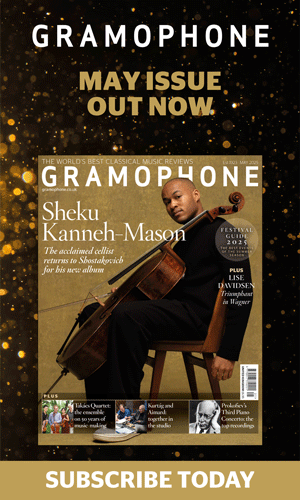Mahler in miniature: Stephen Downes delivers a witty, wry portrait for the Critical Lives series
David Gutman
Thursday, April 17, 2025
Downes blends biography, pop culture, and provocative insight in this punchy Critical Lives entry

Racier and more stylish than some of Reaktion Books’ recent Critical Lives, this mini-monograph also faces stiffer competition. Hard now to imagine a time, not so long ago, when Hans Redlich’s Master Musicians composite Bruckner and Mahler (Dent: 1955) was the sole English-language introduction to the junior composer. With Mahler now so much centre stage he can seem too big a beast for another small study. Yet Stephen Downes, a Szymanowski specialist whose larger books include After Mahler: Britten, Weill, Henze and Romantic Redemption (CUP, 3/14) as well as surveys of musical decadence and sentimentalism, manages a fresh take on established lore and recent findings, in so far as the format allows. At the tipping point between romanticism and modernism (however loosely defined), Mahler’s ambiguous take on the Austro-German tradition would appear to be in safe hands and, unusually, it is not only Mahler the creative musician who is reappraised here.
Downes is often to be found dabbling in popular culture and/or playing up dichotomies for the fun of it
In lieu of a more conventional introduction we begin with ‘Mahler’s Deaths / Mahler’s Lives’, a prologue that starts as an apparent critique of the death-haunted Mahler trope before doubling back as if to persuade us of its validity. A lot happens before Downes veers into a disquisition on Ken Russell’s 1970s biopic. There follow six main chapters ordered thematically as much as chronologically, the last ambiguously entitled ‘The Late Gustav Mahler’. The author suggests that his groundplan parallels or might be part-extrapolated from Russell’s movie: ‘The opening funeral march has now closed (but with “Mahler” still alive in his burning coffin); a scherzo follows (the precocious, playful child, shadowed again by death); then two intermezzi (Mahler as reader and conductor); a pastoral slow movement (the composer in the countryside); an anguished amoroso (his love for Alma); and a cyclic Adagio finale (the end which takes us back to the beginning).’
When not usefully summarising facts and opinions from stacks of secondary sources, Downes is often to be found dabbling in popular culture and/or playing up dichotomies for the fun of it. Neatly linking the composer’s asceticism and athleticism may or may not bring light but does successfully engage the reader. ‘Gustav and Alma’ – mainly Alma’s own chapter, and she is a big presence throughout – is at once brilliant and vaguely gratuitous. Equipped with competing verdicts on her own compositional aspirations, we wander further off-piste with Tom Lehrer’s comic song-writing, a counterblast of feminist musicology and the American sitcom Frasier. Rather than dwelling on the movement order of Mahler’s Sixth Symphony we are directed to the asserted misogyny of its first movement. Or the condition of the composer’s unreliable bowels. As might be expected, Alma’s paradoxical anti-Semitism and her unreliability as narrator are not one whit undersold. She seems both ‘malevolent muse’ and the victim of the gendered power structures of her day and ours. For the time being at least, the two images coexist. Downes also touches on less-discussed issues such as the tension between the assimilated, acculturated Jews of Vienna and the ‘Ostjuden’ from the lands to the east.
As Gustav Mahler nears its end Downes characterises it as ‘short stories’ from a ‘multi-stranded life’. Well-chosen illustrations are given the space to register, sometimes allocated a full page. Non-standard selections include the expressionist painting of Mahler’s burial by Arnold Schoenberg referenced in the text. More in line with the series norm is the absence of music examples. The end matter, mostly acknowledgements and references, finds publisher names omitted in favour of more general, occasionally mysterious, geographical attribution. We are spared another of Reaktion’s pointless telescoped discographies but, as ever, the absence of an index must be considered a black mark. Had it existed, it would have contained a great many names not to be found in blander, only superficially comparable publications.










